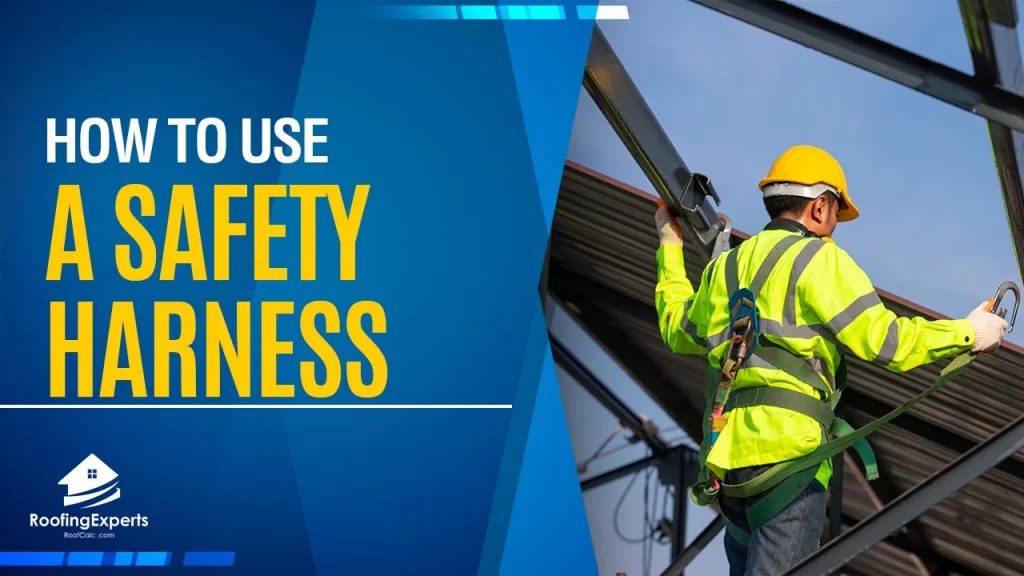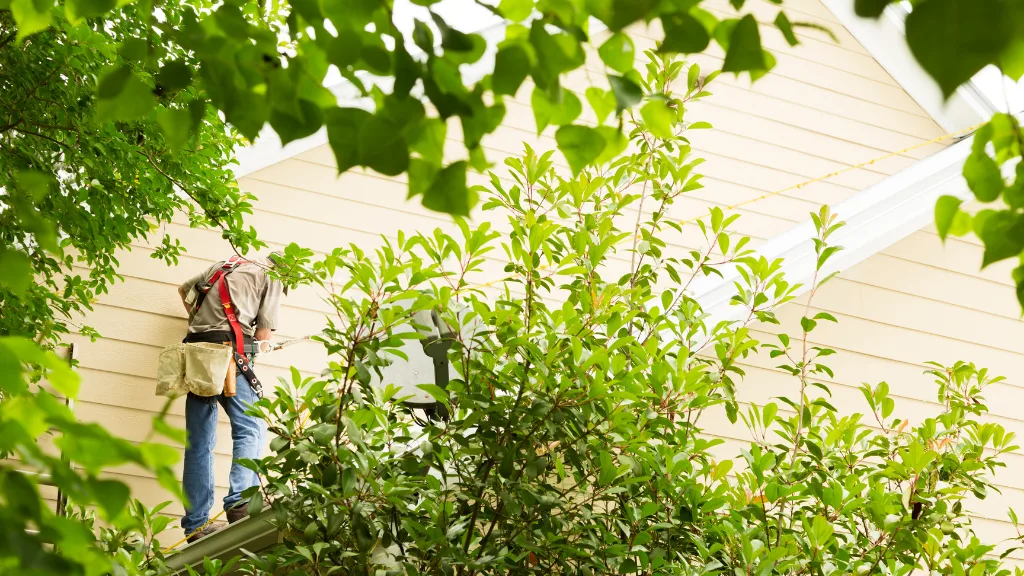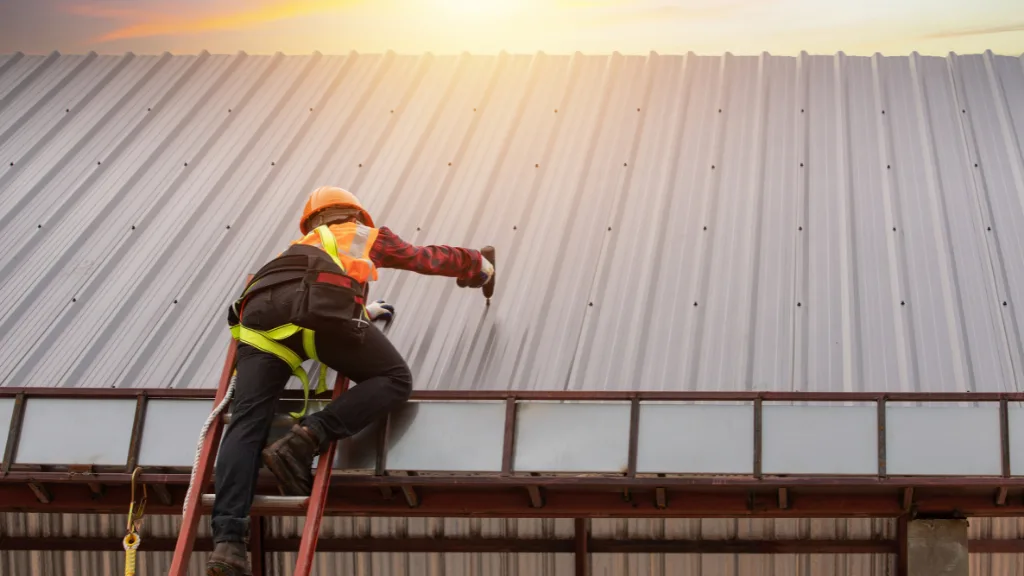
The safety harness is one of the most important pieces of equipment for roofing.
Not only does it provide protection from falls, but also offers a sense of security for workers who are often high up on roofs or other elevated surfaces.
The safety harness is typically worn around the hips and attached to an anchor point with a rope or wire cable. This article will outline how to use a safety harness correctly.
What is a Safety Harness?
A safety harness is a piece of personal protective equipment (PPE) that consists of straps and loops which are worn around the hips.
There should also be some type of attachment point, such as a D-ring or carabiner for attaching to an anchor point.
Types Of Safety Harnesses
There are several different types of safety harnesses that are available on the market. These include full body, four-point and self-retracting safety harnesses.
Full Body Harnesses
The most common type of safety harness is a full body version which covers the whole torso area as well as some parts of the legs.
It has two shoulder straps with buckles and two leg loops. These allow the wearer to be attached at four different points (shoulder, hips and legs).
Four-Point Harnesses
A four-point harness is similar to a full body version except that it doesn’t have any straps over the shoulders or around the waist.
Instead, there are carabiners on the hips and leg loops which are connected to an anchor point.
It is often referred to as a comfort harness because it offers more flexibility than the other types of safety harnesses, but has less support for protecting against falls.
Self-Retracting Safety Harnesses
A self-retracting version features straps that automatically retract into a cartridge when the wearer is not attached to an anchor point.
This type of harness is most commonly used for rescue operations, where it’s important that workers can easily move around and reposition themselves as needed.
Using a Safety Harness for Roofing
These are the steps to use a safety harness properly. For safety, we are going to share how you can use your safety harness.
1. Check your harness – Before using a safety harness for roofing, make sure the webbing is in good shape and not frayed.
Check it thoroughly to ensure no damage has been done by debris or sharp objects which could cut the line.
2. Fall clearance calculation – One of the most important safety factors is making sure you have a good fall clearance distance.
This should be at least three times your height, so for a worker who’s five feet tall it would need to be fifteen feet in length. Make sure to calculate well and check especially if you’re working on some steep metal roofs.
3. Attach harness – Attach both shoulder straps and then clip onto an anchor point which will hold from falling down from the roof in case of a fall.
4. Secure your feet – Use a rope or wire cable to secure your feet and make sure it’s adjustable so that you can sit down, kneel or stand up when needed.
This will ensure that if there is an accident you won’t slip out from the harness straps while working on the roof.
5. Tying a Prusik Knot – This is an effective way to tie your feet securely.
6. Check the harness again – Once you have completed all of these steps, check the harness again for any damage or fraying that may have occurred during use.
Do not remove it from yourself until this has been checked thoroughly and after all work on the roof has been completed.

Safety Harness Selection
It’s recommended to carry out a risk assessment before choosing which safety harnesses are needed on site.
Factors such as height of the work area, type and number of workers involved should be considered.
- When using a full body safety harness it’s important to ensure that there is enough length in the straps so that they don’t restrict movement or cause discomfort when worn for long periods.
- This can be done by attaching all four points at once and then adjusting the straps if needed.
- If a four-point harness is being used, the wearer should be able to stand up from a seated position and touch their toes with both hands without difficulty.
- The leg loops must also fit snugly around the hips but not too tightly as this will restrict movement of legs or make it difficult for workers to sit down in a comfortable position.
- Self-retracting safety harnesses are often selected for their ease of use because the wearer can simply attach themselves at any time without having to adjust straps or clips.
- However, they aren’t suitable if there is a risk that workers will need to be suspended in mid air such as when using them with aerial rescue equipment (cherry pickers, bucket trucks and elevated work platforms).
- When wearing a safety harness for roofing it’s important to follow all instructions from the manufacturer.
- It should fit securely over clothing so that there are no gaps between the gear and skin which could allow slings or straps from tools to cause injury.
- The carabiner gate must also be closed and locked when connecting to an anchor point.
- Workers must also be trained in the correct use of a roofing safety harness before they begin work.
- This includes knowing which attachment points are most appropriate for different working conditions (standing, sitting or lying down).
It is also important to make sure that all tools such as hammers, ropes and harnesses are stored in the correct position on the body. If this is not possible, they should be attached to a lanyard or tool belt for added safety.
How to Fit a Safety Harness:
The harness should be fitted correctly and adjusted so that the waist belt is not too loose or tight.
There will usually also be leg loops attached, which can either be tightened by buckles or adjustable straps.
The D-ring for attaching to an anchor point should ideally sit at hip level (85cm to 100cm above the ground) to reduce risk of injury in case there is a fall.
Harness Safety Harnesses are essential for many types of work, including roofing and other construction jobs where it’s important that workers can avoid falls from height.
It’s vital to make sure they fit correctly, which should be checked by an experienced supervisor.
In conclusion, safety harnesses are an important piece of equipment that shouldn’t be ignored – they should fit comfortably and securely to keep workers safe on site.


